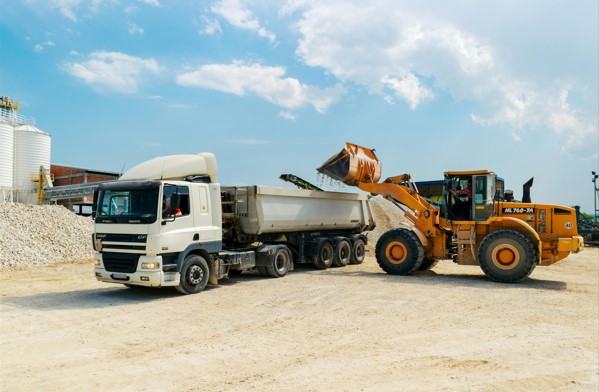The mining industry has always been dangerous, but in recent years, there’s been a growing concern about a particular issue: fatal accidents involving older miners. As the workforce ages, it’s becoming increasingly important to understand the unique safety challenges faced by older workers. This article takes a closer look at the factors contributing to accidents among aging miners and explores ways to improve safety and productivity in the industry.
The Rising Risk of Fatal Accidents in Older Miners
As miners age, the risk of accidents may increase. Research shows that older workers often face more physical limitations and slower reaction times, which can lead to tragic accidents in high-risk environments. The combination of age-related changes and the inherently hazardous nature of mining calls for a more focused approach to safety for this group of workers.
A Changing Workforce: The Demographic Shift in Mining
The mining industry is undergoing a demographic shift, with a growing number of workers over the age of 50. This trend is partly driven by the retention of experienced miners and a decrease in younger workers entering the field. While their experience is invaluable, older miners have distinct safety needs that require updated protocols and support systems to ensure their well-being.
Why Older Miners Are More Vulnerable to Accidents
Several factors make older miners more susceptible to accidents:
- Slower reaction times: Aging often affects the speed at which workers can respond to hazards.
- Chronic health conditions: Health problems like arthritis or hearing loss can limit a worker’s ability to perform certain tasks safely or efficiently.
- Increased fatigue: Years of physically demanding work can lead to exhaustion, heightening the risk of mistakes and accidents.
Physical and Cognitive Challenges: How Aging Affects Performance
As workers age, they often experience a decline in strength, flexibility, and cognitive function. These changes can make physically demanding tasks—such as heavy lifting or operating complex machinery—more difficult. As a result, accidents that might have been preventable for younger workers become more common.
Mining Conditions: The Unique Hazards for Older Workers
Mining environments pose specific risks that can affect older workers more than their younger counterparts, including:
- Exposure to harmful substances: Older miners are more likely to develop respiratory conditions from prolonged exposure to dust and toxins.
- Physical demands: The strenuous nature of mining tasks can lead to overexertion and injury.
- Extreme temperatures: Older workers may struggle more to cope with the harsh underground conditions.
Case Studies: Fatalities and What We Can Learn
- West Virginia Mining Accident (2020): A 62-year-old miner was killed due to an equipment failure. The investigation found that inadequate maintenance and safety checks were factors contributing to the incident.
- Australian Gold Mine Fatality (2019): A 58-year-old miner died after falling due to unstable ground conditions. A more thorough risk assessment could have potentially prevented this tragedy.
These incidents highlight the need for more proactive safety measures that are specifically tailored to older workers.

Preventative Measures to Improve Safety for Aging Miners
To better protect older miners, mining companies can implement several key strategies:
- Regular health screenings: Early detection of health risks can prevent serious issues from developing.
- Workplace modifications: Adjusting workloads and incorporating ergonomic tools can reduce physical strain. Consider placing aging workers in positions of training or management to capitalize on their knowledge and experience without as much physical strain.
- More rest breaks: Offering additional breaks can help prevent fatigue and overexertion.
Technological Innovations: Tools for Safer Mining
Advances in technology are playing a crucial role in improving safety for older workers. Automated machinery and wearable devices that monitor vital signs can help reduce physical strain and provide real-time alerts about potential hazards. These innovations are helping to create safer environments for aging miners.
Training and Support: Addressing the Needs of Older Workers
Training programs tailored to older miners can help bridge the gap between experience and modern safety practices. This can include:
- Refresher courses: Keeping workers updated on the latest safety protocols.
- Ergonomic training: Teaching methods to reduce physical strain and prevent injuries.
- Peer support: Creating networks where older miners can share advice and solutions to common challenges.
By offering these targeted resources, companies can better support their aging workforce while maintaining high safety standards.
Preparing for the Future: Embracing an Aging Workforce
As the mining industry faces a growing number of older workers, it must adapt by fostering a culture that prioritizes both safety and innovation. Initiatives like flexible retirement options and mentorship programs can help leverage the knowledge and skills of older miners while addressing their physical limitations. Integrating these strategies will ensure a more balanced, resilient workforce in the future.
Balancing Experience with Safety in Mining
The experience of aging miners is a valuable asset to the industry, but their safety requires careful attention and ongoing innovation. By combining the wealth of knowledge older miners bring with updated safety practices and technologies, the industry can create a work environment where workers of all ages can perform safely and efficiently.

